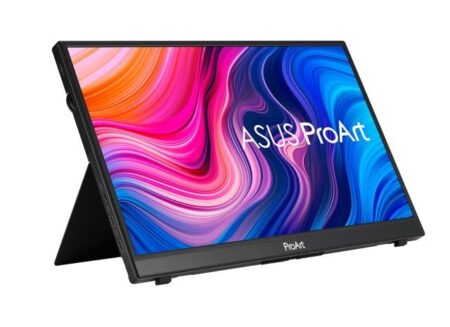News
New Asus Proart Monitors Announced at CES 2021
The new Asus screens were presented at CES 2021, although you might have already heard of some of them. These are the models Asus PorArt PA329CV, PA148CTV, and PA279CV.
Starting with the Asus ProArt Display PA329CV, which had already made waves during the 2020 NAB Show. For the 32-inch screen, we highlight the 4K resolution option and the panel with IPS matrix as well as the 100% sRGB color gamut. It has a brightness of 350 candelas per square meter and a contrast ratio of 1000:1. In terms of color depth, the PA329CV model features 10 bits and is capable of reproducing up to 1073741824 colors.
With a slightly smaller screen of 27 inches this time, the Asus PA279CV model could be considered the little brother of the previous one, sharing some of the main features but in a somewhat reduced size. It’s a screen with 4K UHD LED backlighting (3840 x 2160) that also features a 178° wide-angle IPS panel. It offers a wide color gamut covering 100% of the sRGB color standard and 100% of the Rec 709 color space. The Asus ProArt Preset and ProArt Palette presets also provide adjustments to some color parameters. Asus ensures that the screen comes calibrated with Calman verification which guarantees a color accuracy of Delta<2. This screen is designed for content creation, photo retouching, video, etc.
If you’re also into creating audiovisual content, the Asus ProArt PA148CTV screen can also be a good solution. It’s the smallest of the 3 models at 14 inches with the advantage of being a portable model and having a wide range of connectivity options, including 2 HDMI inputs, a Display Port, and a USB-C. This FHD IPS model also covers 100% of sRGB and Rec 709, and becomes the first screen with Calman certification and factory calibration. The advantage of being portable is that workflows can be improved, and thanks to its anti-glare panel, we can have wider viewing angles with hardly any change in color.
This monitor is touch-sensitive, although it also has adjustment buttons on the front, and we can adapt the interface to our liking. So much so that we can create settings and shortcuts for when we work with Adobe applications. This is due to the ASUS Dial placed on the back, which allows access to the controls of the Adobe program we’re using and to Microsoft Surface Dial functions.



